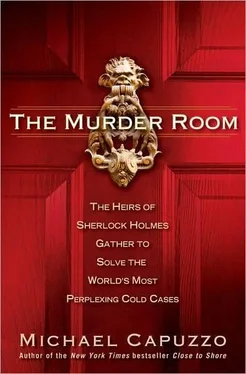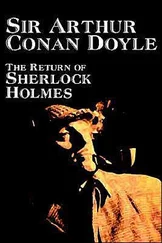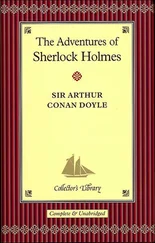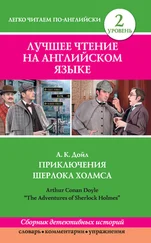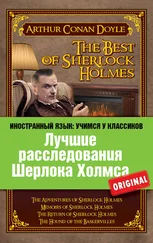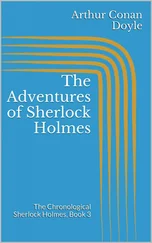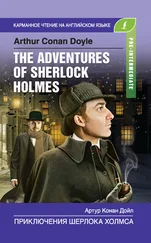It was ancient history, but Chief Inspector John Kelly knew Philadelphia had a bad reputation on big child death cases. The police had bungled the case of the first child kidnapping in America, the most famous crime of its day, the impact of which was still felt. Four-year-old, flaxen-haired Charley Ross vanished from in front of his mansion in July 1874, when two men lured him into a buggy with candy. Christian Ross raced to the police station, but the sergeant told the father not to worry, the two men were enjoying a “drunken frolic.” The kidnappers demanded $20,000 for Charley’s safe return in twenty-three illiterate letters grimly warning of the boy’s annihilation: “… you wil hav two pay us befor you git him from us, and pay us a big cent to…” On police advice, the father didn’t respond to the letters, and “Little Charley” was never seen again. The story was a sensation in the county’s three penny newspapers, and thereafter American parents warned their children, “Never take candy from a stranger.”
Suffering a “bereavement sharper than death,” the Ross family spent the next sixty years and a fortune in vain trying to find the boy.
Now, as the newspapers topped one another with daily headlines trumpeting police defeats-BEATEN CHILD IN BOX STILL UNKNOWN, MISTAKEN FOR DOLL, CLUE TO SLAIN BOY PROVES FALSE-Chief Inspector Kelly was determined to identify the boy and punish his killer, at whatever cost. He launched the largest police investigation of a child’s death in the city’s three centuries.
An urgent Teletype bulletin was sent to police departments in all forty-eight states. The FBI was brought in. The American Medical Association mailed descriptions of the boy’s surgical scars, on the groin area, to all its members asking if they recalled performing the surgery. None did.
The homicide bureau dressed the boy in a suit that once fit a detective’s son and propped him up lifelike for police and media photographs. Detectives traced the bassinet box to the J. C. Penney store in Upper Darby, Pennsylvania, and interviewed eleven of the twelve purchasers of that model. They learned the men’s blue Ivy League cap found near the boy had been created by a seamstress in South Philadelphia, and tracked down all the men who’d purchased the cap. The Indian-pattern blanket was traced to one of three textile mills, then the thread was lost. Fingerprinter Kelly was dispatched to as many hospitals as he could drive to looking for a match of newborn footprints on file. Nothing came of it.
After days of little progress, the chief inspector ordered the largest police force ever assembled in the city, including new academy recruits, to comb twelve square miles around the crime scene. Three hundred men brought tons of possible evidence back to the department, including a dead cat wrapped in an old shirt. Three hundred neighborhood doors were knocked on, more than six hundred neighbors interviewed. All 773 white families who had moved into the city that month were questioned, not a scrap of useful information gleaned.
Nothing.
Long Island New York cops drove down to the morgue to see if it was Steven Damman, whose mother, Marilyn, told the story of his 1955 abduction in The Saturday Evening Post. It was too late for Marilyn; her husband divorced her, quit his Air Force career, and fled to Iowa and took up farming. He never forgave his wife for leaving the child alone for ten minutes. Damman was about the same age and weight, also had blond hair and a little scar on his chin. But the Philadelphia boy’s kidneys were a markedly different size, and Damman had a big freckle on his right calf. It wasn’t Steven Damman.
A Marine said it was a lost brother, one of his eighteen siblings; all eighteen proved to be alive and well. Angry ex-wives and ex-husbands swore it was their child, murdered by the dastardly “ex.” Mothers-in-law denounced vile sons-in-law. Hundreds of letters poured in from the seamy underground of the American family; each was checked. (“I know my sister must have had an illegitimate baby, and she’s the kind that would kill it.”)
Nothing.
Detectives got excited studying a photograph of refugees from the Hungarian Revolution of 1956, fleeing the Soviet conquest. A boy in the photograph was the mirror image of the dead boy. Hadn’t Krogman deducted likely European ancestry from the narrow face and high forehead? After an exhaustive manhunt, Philadelphia police found the Hungarian refugee child happily playing in a North Carolina backyard.
Detectives thought it had to be the Dudleys. The itinerant carnival couple admitted to starving to death six of their ten children as they followed the Big Top, casually dumping two bodies in Lake Pontchartrain near New Orleans, others along a West Virginia highway and in a Lakeland, Florida, mine. Detectives almost felt sorry for them while interviewing the disorganized man and his hapless wife, and had to remind themselves they were human beasts. Yes, they’d passed through Pennsylvania in February 1957. No, the boy in the morgue wasn’t theirs.
Nothing.
The comforting smell of potatoes had disappeared.
Billy was held fast by the unblinking gaze of the dead boy. It was horrid, the ghastly yellowish face like a bruised gourd with hollowed-out eyes. His heart was pounding, his hands clammy with sweat.
The eyes were a well into which he was falling, falling into blackness with no one to catch him.
His mother returned and put a hand on him, broke the spell. She quietly drove him home in the Buick through the gray February afternoon. He did not tell her what he had seen and felt. But something had changed in him. His tongue grew sharper around his parents, and bitterly sarcastic. He found friends, but while other high school cliques formed around sports or drama, his gang “didn’t care about anything but drinking and having sex… I was white-collar Jewish hanging out with tough, blue-collar Italians.” He began drinking and smoking. He stayed small but his fights now were more violent, with bigger kids.
He was one of the smallest kids around, the fastest runner, wiry and nasty and chin-out tough, a wiseass with an answer for everything.
Billy was no longer entertained by kicking over anthills. He got a BB gun, and when he was fifteen, he aimed the gun at the backside of another boy and pulled the trigger. The shot grazed the boy’s butt. The kid squealed like a stuck pig. It was hilarious! Billy roared with laughter.
As he grew older, he grew angrier.
The police came to his house, a five-bedroom split-level, and talked to his father. They were tired of pulling the doctor’s youngest out of scrapes, and now this. How could this happen in such a nice neighborhood, to such a good family?
Billy was still laughing. “It was just a BB gun.” He grinned. “So I shot him in the ass, big deal. I was just trying to graze him.”
The police were not amused. Billy was “ just a kid,” but teenage ruffians were no longer seen in the nostalgic, “boys will be boys” light of earlier generations.
FBI director J. Edgar Hoover declared youth crime, the new scourge of “ juvenile delinquency,” to be a national emergency brought on by family disruptions from the war and a general decline in morals. Parents fretted over traditional values under assault from rock music, materialism, and movies like James Dean’s Rebel Without a Cause. A Roper Organization survey showed Americans were more worried about youth crime than open-air atomic testing, school segregation, or political corruption.
Something was wrong, very wrong, with the sons of the new affluent America. William Heirens, from a wealthy suburban Chicago family, had collected guns at thirteen, was accepted to the prestigious University of Chicago, and became a serial killer at seventeen, scrawling in lipstick on the mirror of one of his three victims, “Stop me before I kill again!” Seymour Levin was no longer simply the neighborhood bogeyman. Psychologists said he was an example of the new, especially depraved breed known as “constitutional psychopathic inferiors”; CPIs were human monsters nobody understood, except they shared insatiable resentments and no conscience. This new generation was more violent and depraved than Al Capone’s shooters and the worst criminals of the 1920s and ’30s.
Читать дальше
